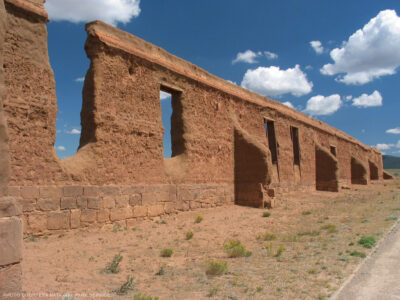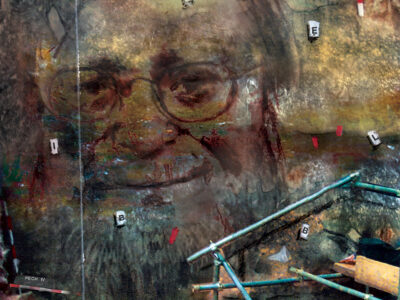You’re leading an excavation of Paleolithic artifacts in Combe-Capelle, France, and your $100,000 budget is dwindling. The choices are becoming increasingly difficult: What should the perimeter of the excavation site be? Should you use a fast but heavy-handed backhoe, slow but delicate dental picks, or something in between? Where will you sleep? What will you eat? Make the wrong decision and you could bungle the whole dig or run out of money for the season
In this case, however, what you do is relax, since you’ve been excavating on a computer program called the Virtual Dig, created by Dr. Harold Dibble, professor of anthropology and co-director of the excavation at Combe-Capelle from 1987-1991. Dibble, curator of the University Museum’s European archaeology section, sees the program as a teaching tool for future archaeologists
“The Virtual Dig” was also the title of a recent conference at the University of Pennsylvania Museum of Archeology and Anthropology that highlighted some of the ways new technology has transformed archaeology. The event was part of an ongoing celebration of the 50th anniversary of ENIAC, the first large-scale, general-purpose electronic computer, developed at Penn in 1946.
According to Dr. Vincent Pigott, the associate director for new
technologies at the University Museum who served as the symposium’s
coordinator, the impact of computers on archaeology has been “enormous”
and the rate of change “so rapid that our wildest dreams are constantly
being fulfilled.” Computers, “have installed a bridge between the
scholar and the interested public.”
The ancient city of Pompeii, for instance, may have been buried under ashes nineteen centuries ago, but a Pittsburgh researcher and computer-designer has brought the civilization back to life in three-dimensional cyberspace.
Dr. Carl Eugene Loeffler, research director of SIMLAB, the National
Robotics Engineering Consortium at Carnegie Mellon University, showed
vividly detailed examples of his Virtual Pompeii, from the flame swaying
over a marble altar outside the Temple Isis to the colorful murals
hanging within.
At Penn, Dr. David Romano, keeper of the Mediterranean section of the University Museum, is leading a project to map the ancient roadways, agricultural land divisions, and monuments of Roman Corinth, and place them on the Internet
“Our achievable goal is to put on the Web the entire city of Corinth,
digitized stone for stone,” he said. Romano also hopes to publish a book
and CD-ROM on the project in the next year or two.
By taking data from site surveys, topographical maps, historical texts,
aerial photographs, and satellite imagery, and putting it all into
elaborate computerized maps, Romano’s team has been able to present a
more comprehensive picture of Corinth — and to gain insights into
questions such as whether it was an agrarian colony, how it fit into the
overall Roman colonial plan, and how it related to the Greek city of
Corinth, which the Romans destroyed a century before building on top of
its ruins in 44 B.C.
In the work of uncovering artifacts, said Dibble, context is crucial.
“We want to know not just what we found, but where we found it … if
we’re going to reconstruct what Neanderthal life was like.” But he
recalled the drudgery — and danger of error — that comes with taking
measurements by hand, drawing and color-coding objects, and recording
the coordinates of their locations. This is especially the case when one
is excavating in, say, southern France, where a wine-filled lunch and
the afternoon sun can take a toll on efficiency.
While excavating Combe-Capelle, Dibble found a way to have his lunch and eat it, too, courtesy of a laser
theodolite — a device that calculates the coordinates of artifacts by
aiming a laser beam at a small prism placed on the objects and
“shooting” the data into a computer. (Romano’s crew used similar
technology to survey the architecture and Roman roadways in Corinth.)
Archaeologists can also use electronic calipers and scales and a digital
camera to transfer the measurements and images of artifacts directly to
the computer.
Work is now underway to turn the concept into a commercial product for undergraduate archaeology classes, though Dibble has been using a prototype of the computer program for about a year now. When students finish using it, they can compare their approach and results to those of the real dig at Combe-Capelle. Of course, Dibble points out mischievously, they can’t do a better job of excavating than his team did. After all, the only artifacts to be found are the ones his team put in the program.




